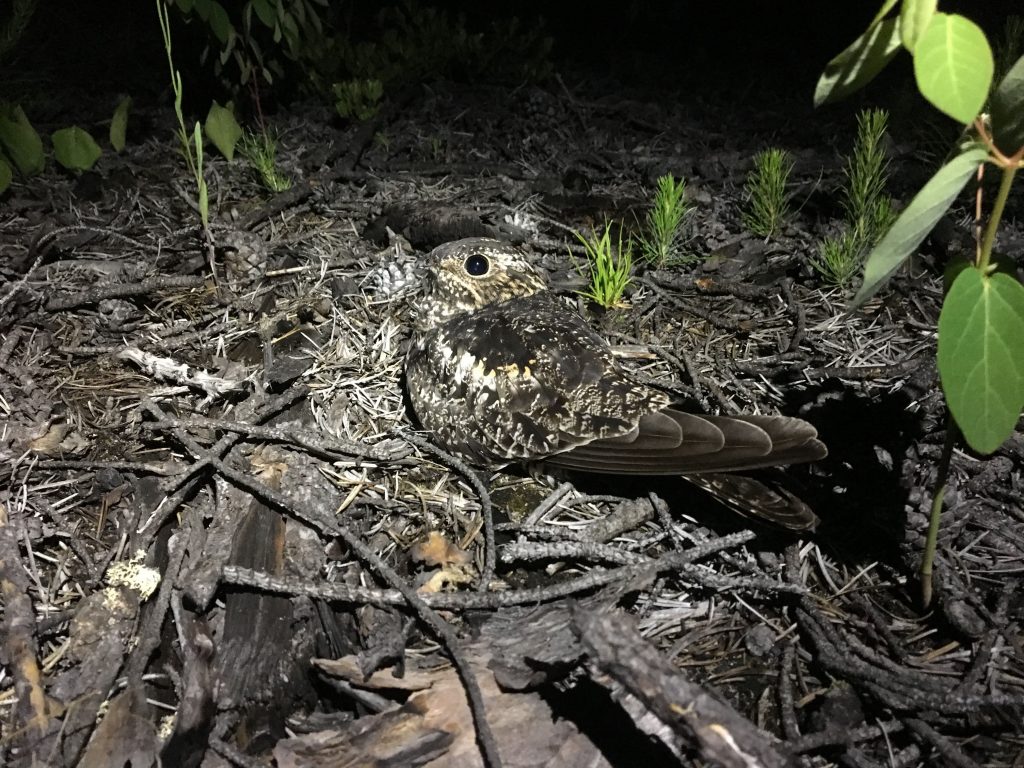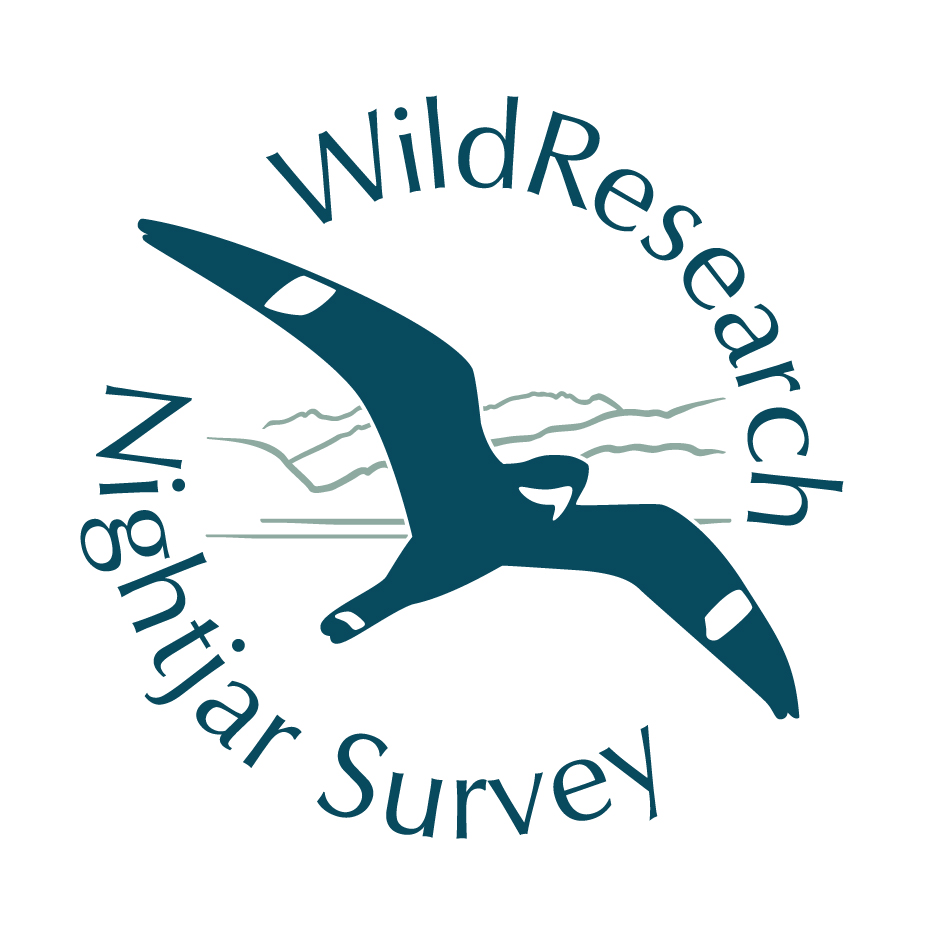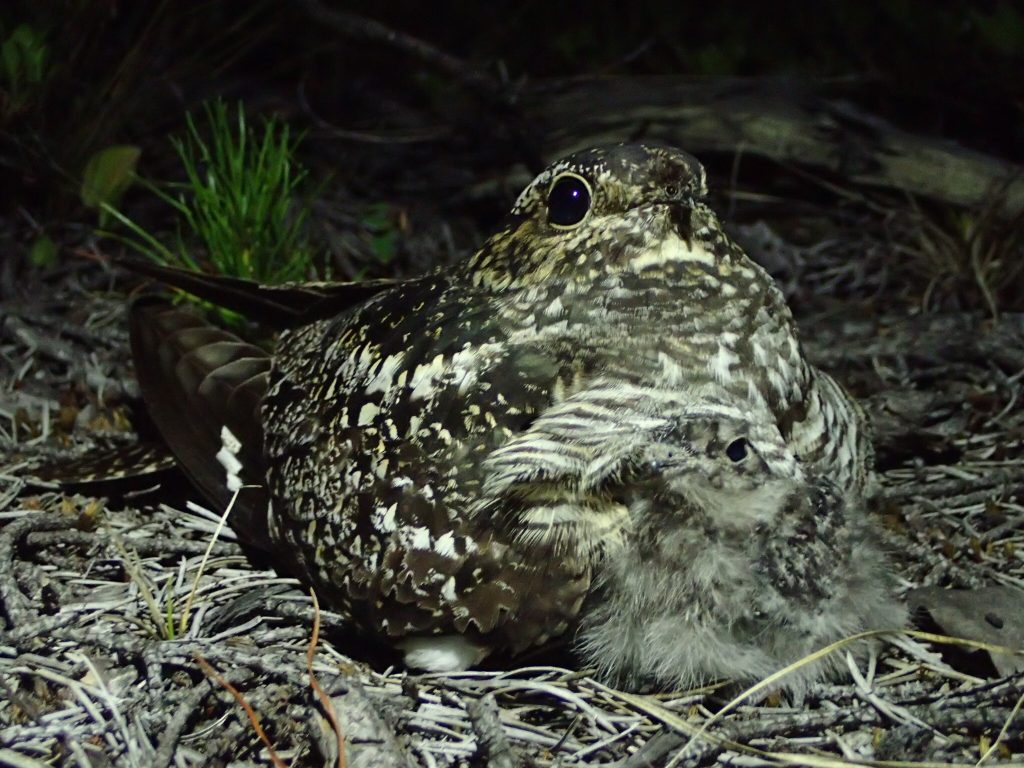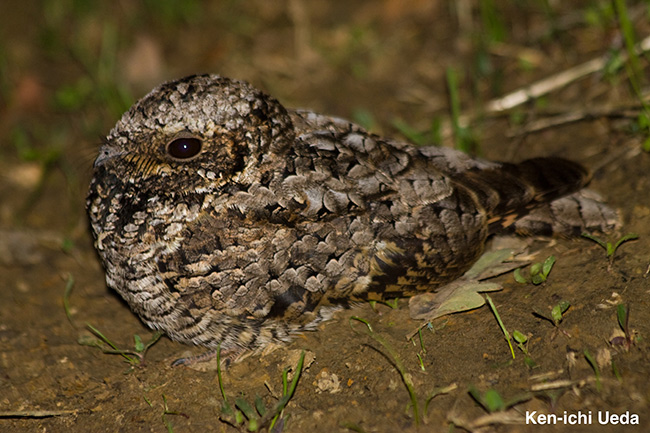Nightjar Survey
Important Update
Thanks for your interest in nightjar surveys! Long-term national coordination of the Canadian Nightjar Survey has been transferred to Birds Canada, including the participation of our valuable WildResearch volunteers. For more information and to participate, please visit their website https://www.birdscanada.org/ and the NatureCounts data entry portal https://birdscanada.org/
Merci de votre intérêt pour le recensement des engoulevents ! La coordination nationale de l’Inventaire canadien des engoulevents a été transférée à Oiseaux Canada. Toutefois, les bénévoles dévoués de WildResearch continueront à participer à ce projet. Pour plus d’information et pour participer, veuillez visiter le site Web suivant https://www.birdscanada.org/ et la page NatureCounts du projet https://birdscanada.org/
Why Survey for Nightjars?
Nightjars are a family of cryptic birds that forage for flying insects primarily at twilight or during the night. Due to their feeding habits, nightjars belong to a larger guild of birds called the aerial insectivores. Many of these species are highly migratory, spending their winters as far south as Argentina. These beautiful birds have long pointed wings for flight and are highly camouflaged because they roost during the day and nest on the ground. There are three species of nightjars that regularly occur in Canada: Common Nighthawk, Common Poorwill, and Eastern Whip-poor-will. A fourth species, the Chuck-will’s-widow, can occasionally be found on Point Pelee in southern Ontario.
The need to conduct surveys for nightjars in Canada has been identified for several reasons:
- Relatively little is known about them due to their nocturnal habits
- Two of our species, the Common Nighthawk and the Eastern Whip-poor-will, are already listed as Threatened under the federal Species at Risk Act
- Nightjars belong to a larger guild of birds, the aerial insectivores, which are thought to be declining across North America
Program History
From 2010 – 2020, WildResearch initiated and developed a national-scale monitoring program for nightjars, an understudied group of birds of conservation concern.
- 2010-2013: BC Poorwill Survey was initiated in south central British Columbia to understand Common Poorwill population status. The program used the survey protocol designed by the Nightjar Survey Network in the US.
- 2014-2015: The program was renamed as the BC Nightjar Survey and expanded to survey for the Common Nighthawk across their range in British Columbia. The protocol was revised to create separate protocols reflecting the two species varying ranges and life histories. Trial surveys were conducted in Alberta and Saskatchewan.
- 2016: The program was again renamed as the WildResearch Nightjar Survey and officially expanded to 5 new regions: Alberta, Saskatchewan, New Brunswick, the Yukon, and the Northwest Territories. The expansion was made possible by two major accomplishments. First, the Nightjar Atlas was introduced, hosted by the Community Mapping Network, and allowed for automated route sign-up to ease the workload of volunteer coordination. Second, a new standardized Canadian Nightjar Survey Protocol ensured that all citizen science nightjar surveyors across the country would follow the same survey methods.
- 2018: WildResearch launched another region in Ontario at the heart of the Eastern Whip-poor-will range, and the New Brunswick region was renamed as the Maritimes region with the inclusion of Prince Edward Island and Nova Scotia.
- 2019: WildResearch launched a Manitoba region. Statistical analyses of the data collected suggested that nightjar surveys are important for effective conservation management, which encouraged federal wildlife managers to consider financial support for nightjar surveys.
- 2020: The program became the Canadian Nightjar Survey and management was moved to Birds Canada for long-term management, with support from Environment and Climate Change Canada.
Why Transfer?
Although we’ve loved every minute, we at WildResearch have been running nightjar surveys as volunteers with a limited budget for the last decade; and the Canadian Nightjar Survey needs a stable home with more resources to ensure it fulfills its potential for nightjar conservation. Birds Canada is at the forefront of conservation citizen science in North America and has the knowledge and infrastructure to take the Canadian Nightjar Survey to that next level.
We’re currently busy working with Andrew and the Birds Canada team to make sure the transition is as smooth as possible. We’re thrilled that Regional Coordinators will be staying on and involved with the Canadian Nightjar Survey; so volunteers will continue to have that personal, local, first line of contact. Birds Canada staff are currently busy building a new website and data management system, which will enter the data directly into Nature Counts (where the rest of the dataset is already housed and freely available). We’ll be sure to keep all our volunteers up to date as things progress and we approach the 2020 survey season!
For more information on how to get involved in your province or territory, contact your Nightjar Survey Regional Coordinator:
British Columbia: Paul Preston nightjars.bc@wildresearch.ca
Alberta: Elly Knight nightjars.ab@wildresearch.ca
Saskatchewan: Nicole Lerminiaux nightjars.sk@wildresearch.ca
Manitoba: Alicia Korpach nightjars.mb@wildresearch.ca
Ontario: Elora Grahame nightjars.on@wildresearch.ca
Yukon: Shyloh van Delft nightjars.yt@wildresearch.ca
Northwest Territories: Amélie Roberto-Charron nightjars.nwt@wildresearch.ca
Quebec (and Program Manager): Andrew Coughlan acoughlan@oiseauxcanada.org
Maritimes: Virginia & Alex Noble-Dalton nightjars.nb@wildresearch.ca
What We Learned
Over the past decade, we learned a LOT about nightjars! Much of what we learned informed the development of the now nationally-adopted Canadian Nightjar Survey Protocol, which can be found on the Birds Canada website here.
But we also worked with students at several universities in Canada to learn about nightjar ecology! Check out our Annual Reports, Publications, Reports, and archived issues of the Nightjar News to see what we learned.
Nightjar Survey Annual Reports
- WildResearch Nightjar Survey 2019 Final Report
- WildResearch Nightjar Survey 2018 Annual Report
- WildResearch Nightjar Survey 2017 Annual Report
- WildResearch Nightjar Survey 2016 Annual Report
- BC Nightjar Survey 2015 Annual Report
- BC Nightjar Survey 2014 Annual Report
Scientific Publications
Other Nightjar Survey Reports
Nightjar News
Past issues of our bi-monthly newsletter the Nightjar News are available here.
You can also learn more about the outreach and science impacts of the WildResearch Nightjar Survey through this great video produced by the Daly Point Nature Reserve.
Three Species of Nightjars in Canada
1. Common Nighthawk (Chordeiles minor)
- Breeds across North and Central America. Canada’s grasslands and boreal forests are thought to support high population densities.
- Requires open habitat for foraging, roosting, and nesting such as grassland, clearcuts, sandy areas, rocky bluffs, and open forests
- Listed as Threatened under the Species at Risk Act due to significant population declines across Canada, but reasons for declines are unknown. The Committee on the Status of Endangered Species in Canada has recommended downlisting the Common Nighthawk to Special Concern as of 2018.
- One of the last migratory breeders to arrive: present in Canada from late May/early June to early September
- Crepuscular feeder: most active at dawn and dusk
- Cool fact: male Common Nighthawks make a mechanical wing-boom sound during breeding display dives
2. Common Poorwill (Phalaenoptiuls nuttallii)
- Breeds in western North America, with populations in southern British Columbia, Alberta, and Saskatchewan
- Found in semi-arid, open habitats such as rocky bunchgrass hillsides, and open forests
- One of the least understood of North American birds due to their completely nocturnal habitats
- Population trends are completely unknown: classified as Data Deficient by the Committee on the Status of Endangered Wildlife in Canada
- Present in Canada from early May to mid September
- Cool fact: the Common Poorwill can enter torpor for weeks at a time to conserve energy
3. Eastern Whip-poor-will (Caprimulgus vociferus)
- Their breeding range extends east from Saskatchewan and into the US, with southward migration into Central and South America between early September and late November.
- Can be found in Canada between March and September.
- Eastern Whip-poor-wills can be found in open woodland habitat where their plumage allows them to be camouflaged against the leaf litter.
- Nests are built on the ground, where nestlings often move around to confuse predators.
- This species is listed at Threatened under the Species at Risk Act due to habitat loss.
- Cool fact: When an Eastern Whip-poor-will lays its eggs is determined the lunar cycle, so that they hatch on average 10 days before a full moon.




